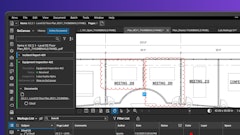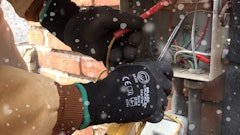
I-40, the heart of Oklahoma City's transportation corridor, has needed work for some time, but work was launched with the groundbreaking of the I-40 Crosstown Relocation Project.
Planning is also underway in downtown Oklahoma City for the future Bricktown Canal Expansion Project. The revitalization efforts in the historic commercial center will tie the existing waterway to the new festive canal and river walk with their restaurants, entertainment venues and other attractions.
But before the canal expansion or I-40 construction could begin, utilities had to be relocated. The Sanitary Sewer Project through Bricktown Canal Zones F and G and along portions of SW 5th Street and S Phillips Avenue involves relocating over 5,000 feet of 60-inch interceptor. The low bidder was Urban Contractors, Inc., of Okalahoma City, Okla.,
With project dollars critical, the engineer, owner and installer cooperated to find the most economical installation methods with the longest life cycle benefit. The pipe supplied by HOBAS Pipe USA of Houston, Texas, has a design life of over 100 years. "It has been tested per ASTM D3681 in a 1 Normal sulfuric acid solution to prove its life expectancy," said Jose Rodriquez, quality control supervisor for HOBAS. "We have been testing the pipe in this environment since 1987."
"Oklahoma City opted to allow fiberglass pipe due to its durability in hazardous environments. In sanitary sewers of this size, the corrosive environment is extremely harmful to most other materials," said Keith B. Angier, P.E., vice president, MacArthur Associated Consultants, Ltd., of Oklahoma City, who helped plan the project.
The installation methods specified for the 5,000 feet of pipe, ranging in size from 18- to 60-inch diameter, included traditional cut and cover as well as trenchless methods. A portion of the 60-inch sanitary sewer pipe was specified for installation with steel encasement either in a trench or by boring.
Urban Contractors proposed an alternate construction method to help reduce costs. Their proposal eliminated the casing, instead installing the HOBAS centrifugally cast, fiberglass reinforced, polymer mortar (CCFRPM) pipes by direct bury and jacking.
Urban Contractors had evaluated the performance of HOBAS pipes in rights-of-way and under live load conditions. Many previous projects utilized HOBAS CCFRPM under roadways, railways and even directly under live runways. Oklahoma City, ODOT, Union Pacific Railroad and the Burlington Northern Santa Fe Railroad accepted the installation proposal.
"The use of the jacking pipe under the railroad and interstate has allowed faster construction and better serviceability," said Angier.
HOBAS provided the 540 US ton CCFRPM jacking pipes. Although most of the project was traditional cut and cover, several canal and railroad crossings required jacking. The short jacking runs ranged in length from 140 to 470 feet. "This was the first jacking project we undertook. We bought the machine from Akkerman and visited a site where the equipment was being used, and we tried it ourselves" explained Doug Mowdy, project superintendent with Urban Contractors. "Most of the jacking loads were low, in the 200-ton range, but on one, steering caused the loads to get up to 400 tons. This was still within the capacity of the pipe.
"Selection of the HOBAS pipe was based on its strength as a jacking pipe as well as the tight-sealing joints. Jacking under the canal, we were in wet conditions and the pipe and joints performed great." With the project now complete, all parties involved are pleased with the outcome.
"We feel that we have a very successful project. We were very pleased with the technical support provided by the engineers and staff at HOBAS," said Angier.
The utility relocation project was completed early in August. The project has been virtually "flawless," according to Crystal Kowalik, P.E., civil engineer with Oklahoma City.
"We have been real happy with the product and service. I would say HOBAS' field service is batting 1,000 percent," added Mowdy.
The experience was so positive that since this project was completed, Urban has bought HOBAS for two new projects in Oklahoma using approximately 15,000 feet of 18- to 48-inch HOBAS pipe.

















